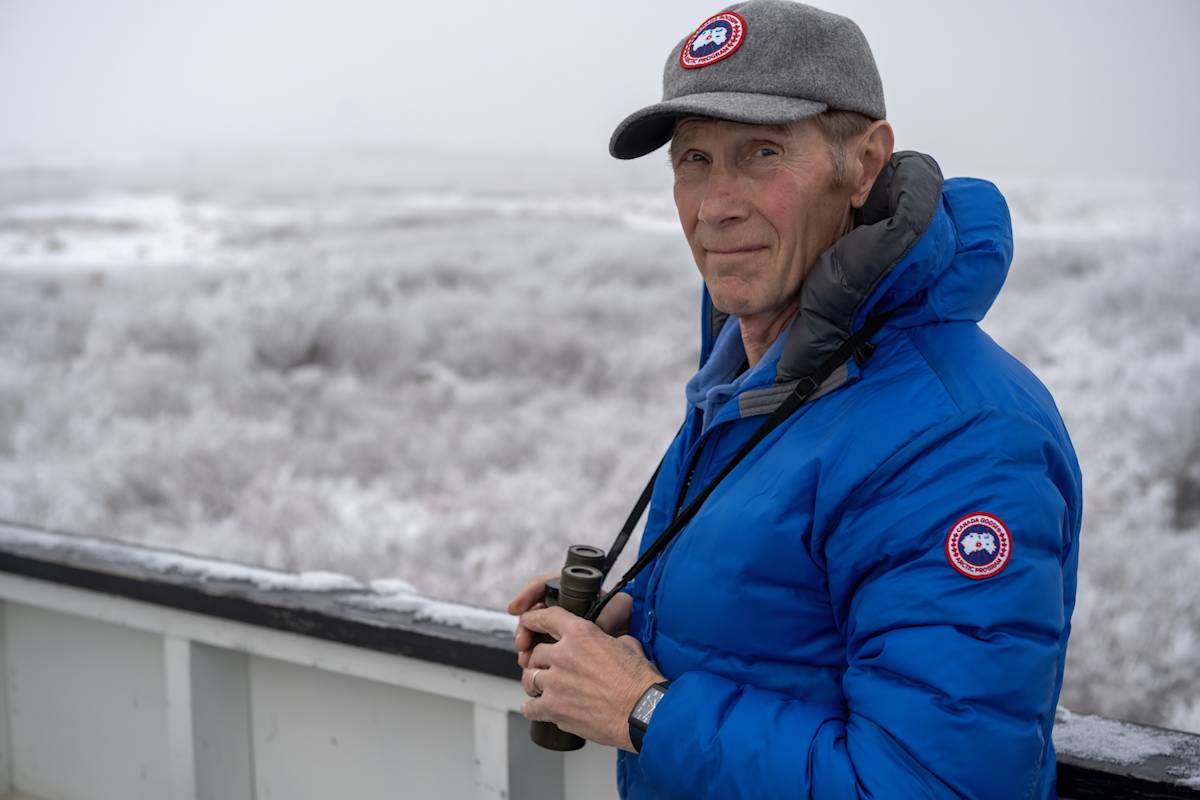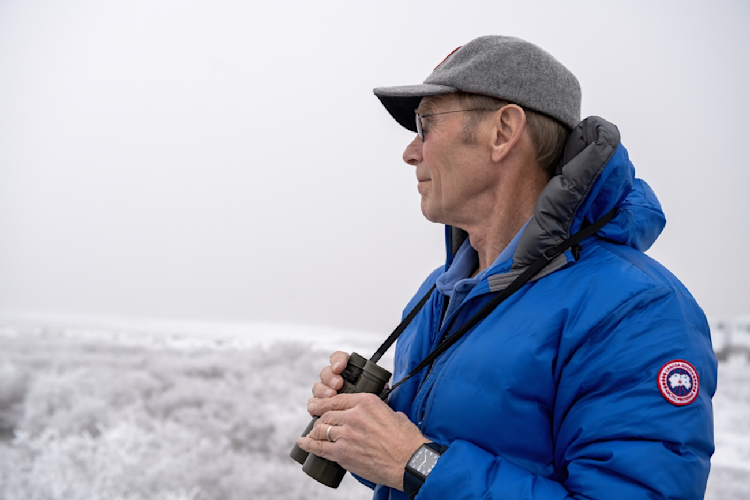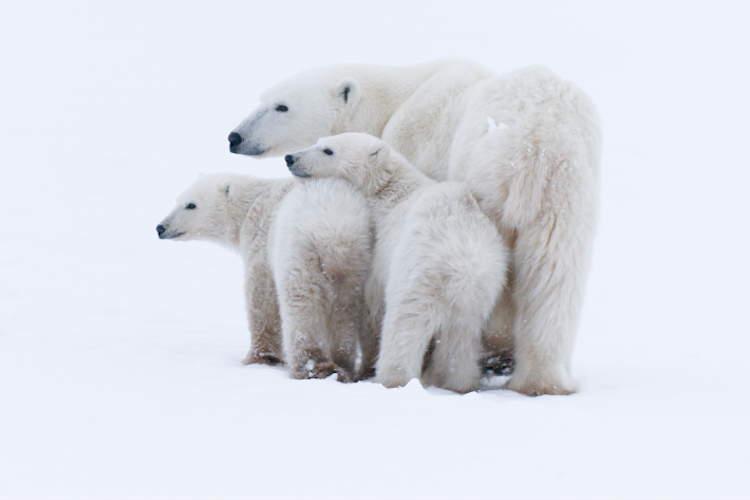Q: When did you first start noticing changes in the sea ice and with Alaska’s polar bears?
During most of those early years in Alaska, the summer sea ice didn’t retreat far from the state’s northern coast. Back then, I could stand on the shore near Barrow or Prudhoe Bay and see the pack ice even in late summer. If lucky, I might be able to see polar bears hunting seals with the aid of a spotting scope.
At the time, we were able to conduct field research on the sea ice in both the spring and fall. But by the late 1990s, the fall sea ice had become unpredictable. By the time freeze-up had progressed enough to land and work safely on the ice, there wasn’t enough daylight to conduct our research. The year 2001 goes down in history as the last year we conducted autumn field work on the ice.
By then, our research had shown that polar bears need sea ice to reach their seal prey—so the retreat of the ice and the increasing numbers of polar bears onshore in summer were both troubling signs that big and negative changes were afoot.
Q: In 2007, you spearheaded a team that led to the polar bears’ listing as a threatened species under the Endangered Species Act. Can you tell us about that?
By then, I had earned a PhD in biology from the University of Fairbanks and my job function had been transferred to the U.S. Geological Survey in Alaska. Our findings and those of researchers in other countries had revealed the emergent threat that climate warming posed for polar bears.
Environmental groups had petitioned the U.S. government to list polar bears under the Endangered Species Act. My team and I were tasked with advising the Secretary of Interior on whether a listing was warranted. Our deadline was six months, a timeframe so tight we had to recruit researchers from other agencies and jurisdictions, expanding our USGS team from five to 17. The work was so intense that I moved a sleeping pad and hot plate to my office.
In the end, we assembled nine reports that told a dire story. We projected that we could lose two-thirds of the world’s polar bears by the middle of this century, and possibly all of them by century’s end, without significant greenhouse gas reductions. Convinced by our findings, the U.S. listed the polar bear as a threatened species under the ESA on May 14, 2008. With this act, polar bears became the first species ever to be listed because of future threats from human-caused global warming.




















